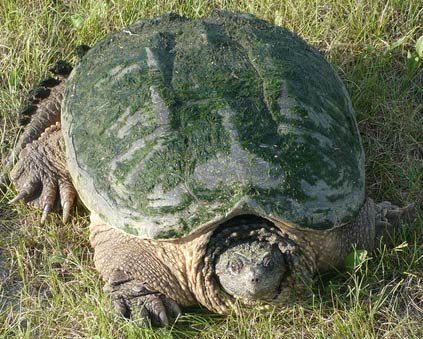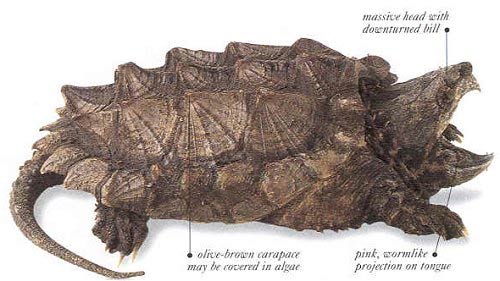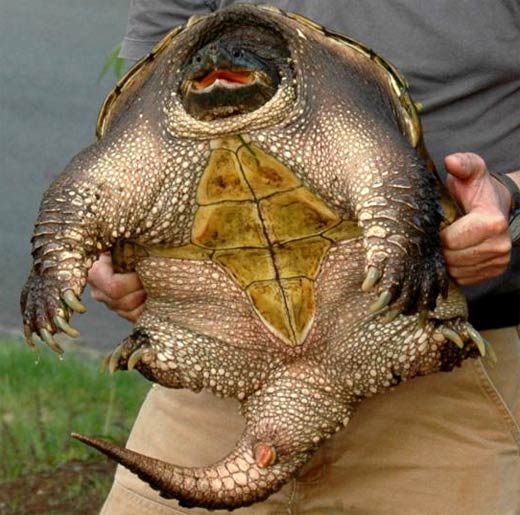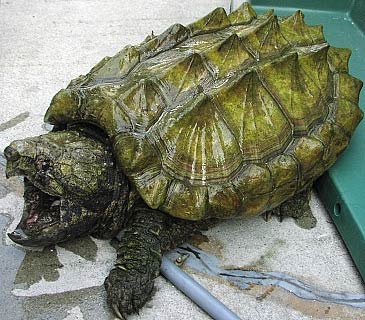Snapping Turtle – Aggressive Biter

There are two kinds of Snapping Turtle: the Common Snapping Turtle and the larger Alligator Snapping Turtle. As its name suggests, the Common Snapping Turtle is more wide-spread and can be found in a large area, from southeastern Canada, to the Rocky Mountains, east as far as Florida and Nova Scotia, and down south as far as Ecuador.
Snake-like Turtle
Snapping Turtles have the specific name serpentia, meaning ‘snake-like. This refers to the unique long neck the turtle has, as well as to its aggressive behavior on land, and its habit of biting really hard.

Aligator species at right
The long neck is highly mobile and the turtle can snap away at any animal that tries to pick it up. The powerful jaws are strong enough, and the beak is sharp enough, to sever a human finger. They are thus not suitable as pets, especially for children!
The long neck allows the Snapping Turtle to reach all the way across its carapace and bite as far as its hind legs. In addition to its dangerous beak, the claws are sharp and can cause lacerations.

The long neck aids the Snapping Turtle in hunting and defense. Common Snappers will often lie in the bottom of shallow muddy parts of rivers or lakes and use their long necks as snorkels. They eat both vegetable matter and meat. They are good at scavenging and bottom-feeding, but they are also known to hunt live animals, including fish, smaller turtles, frogs and invertebrates.

A look at their nice tails, claws and undersides. This one doesn’t seem to be happy about it.
Egg Laying
Snapping Turtles spend most of their time in or near water, but will travel over land to lay eggs. They often travel far from the nearest water source, due to a number of factors, including pollution, habitat destruction and over-crowding. Females are able to carry sperm from mating, for many seasons, until the right conditions are found for egg laying.

This alligator species shows its pretty carapace
They lay between 25 and 80 eggs at a time, in sandy soil. A hole is first dug, then the eggs are pushed in and covered up. The soil incubates the eggs and the time it takes is dependent on temperature. Eggs can hatch from 9 to 19 weeks after being laid. If it is very cold, hatchlings will spend the winter at the nest.
